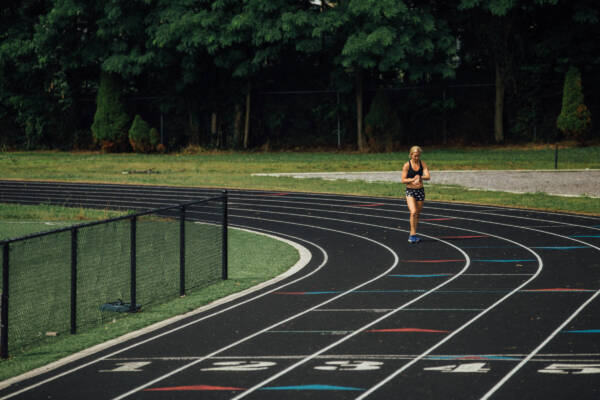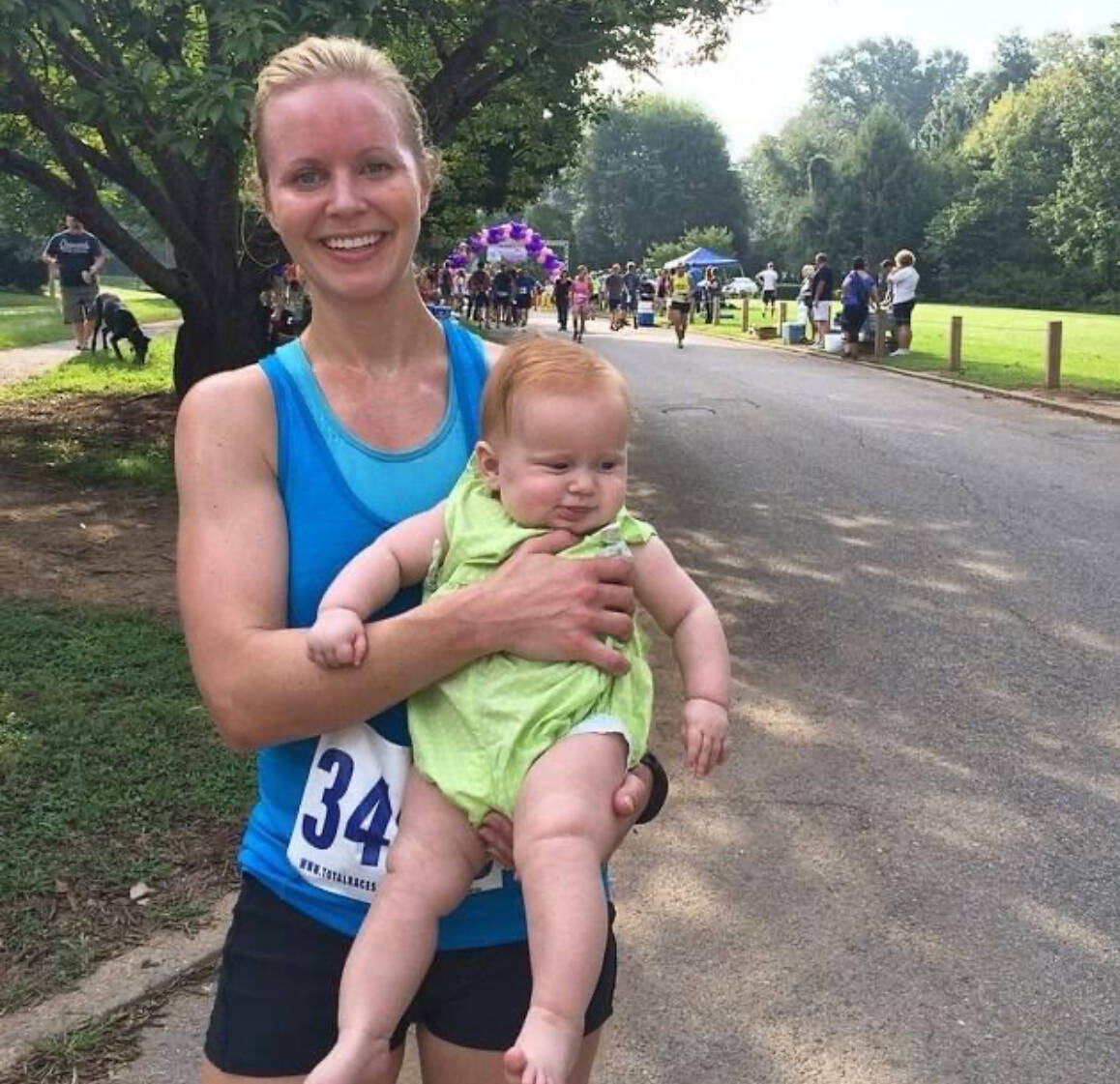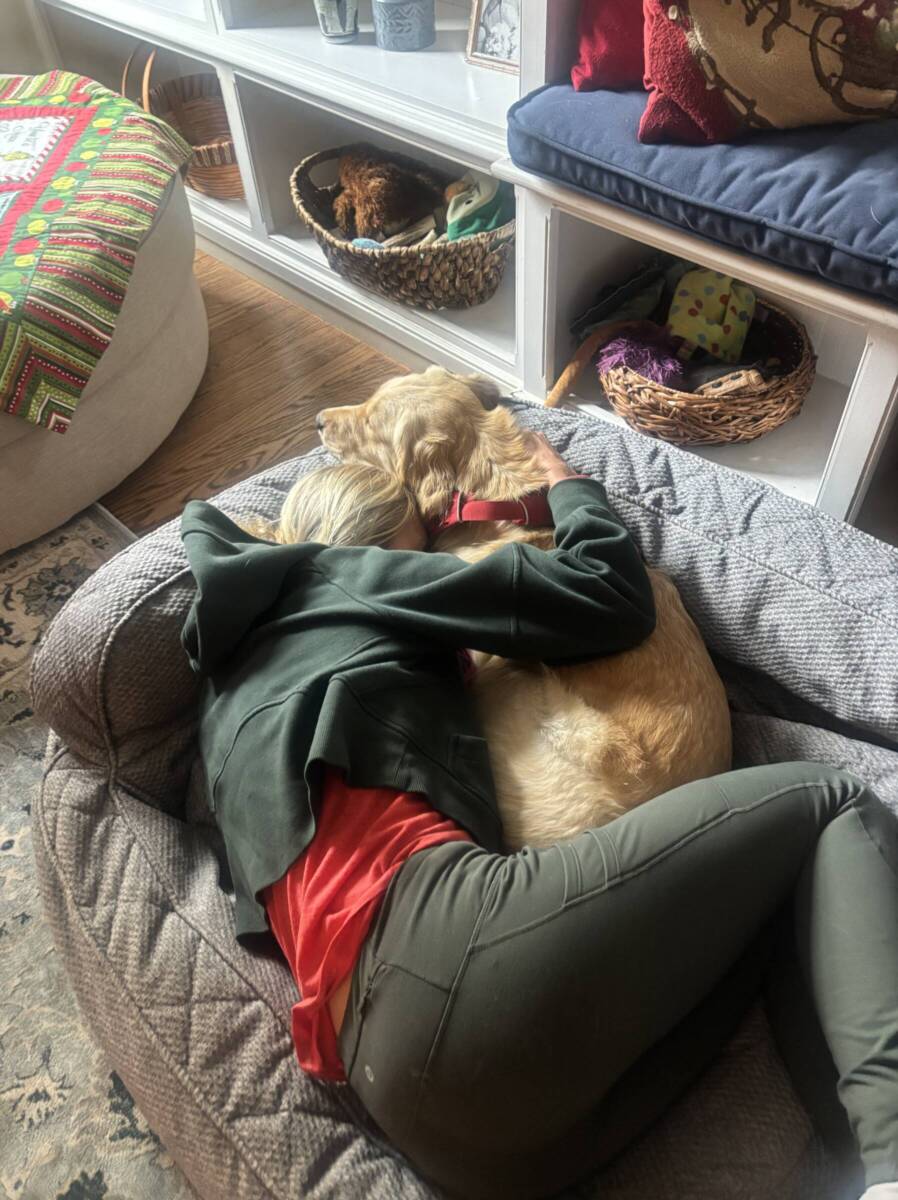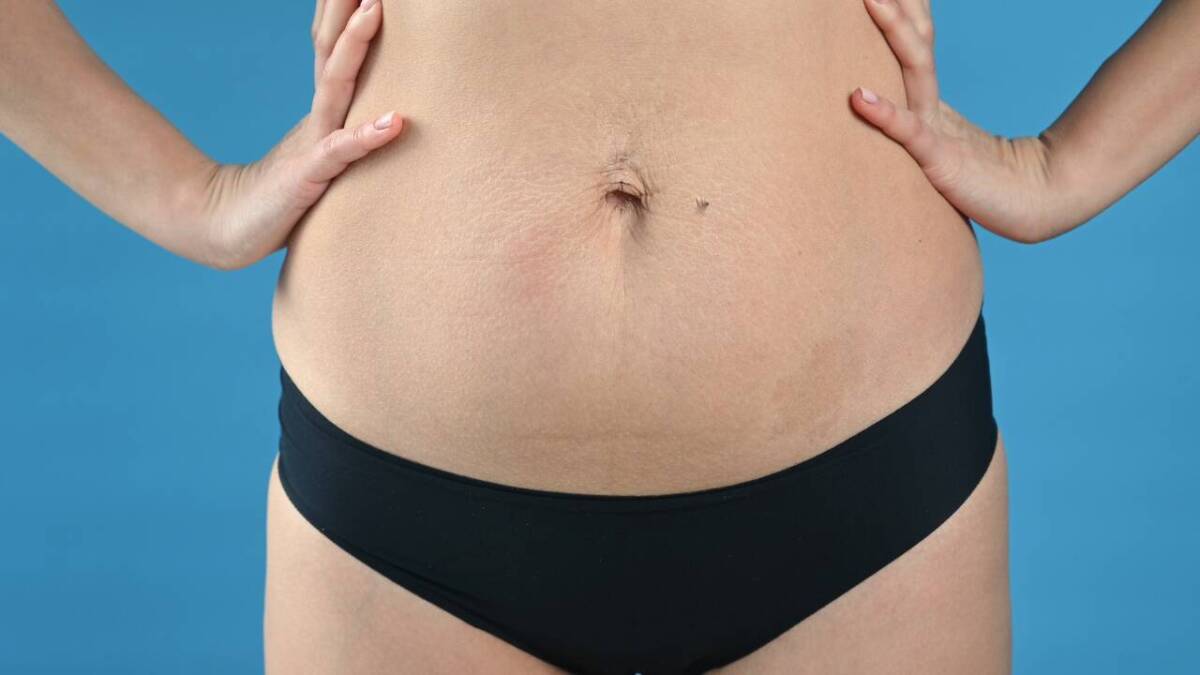The Danger of Low Iron in Runners During Summer
Studies show that about half of female endurance athletes have low iron. Female runners lose iron every month due to menstruating. We also lose iron in our sweat and foot strike. Low iron can hurt performance and make you feel very tired. Small changes to your diet can help you keep your iron levels where they need to be to run and feel your best. Here’s how.

This week one of my athletes shared that she learned she had low iron and a ferritin level of two. TWO. For reference, female athletes should have ferritin between 60 and 300. Unfortunately, low ferritin levels and low iron in distance runners is very common. Female runners are at a higher risk.
In fact, one study found that it impacts about half of female endurance athletes. Pros like Keira D’Amato and Kate Grace have talked openly about struggling with low ferritin and low iron.
Table of contents
- My experience with an iron deficiency
- Eat iron right foods.
- Take an iron supplement after you run.
- Pair Vitamin C with iron.
- Avoid taking iron with caffeine, calcium, and zinc.
- Cook with cast iron skillets.
- Cross-train.
- Why do runners have low iron?
- Are women more likely to have low iron?
- Does exercise make anemia worse?
- Can low iron affect your running?
- What does iron deficiency in runners feel like?
- How long does it take to raise iron levels?
The issue is becoming more well-known, thankfully. But a lot of runners are suffering from poor performance, fatigue, and other symptoms due to an iron deficiency–especially in the summer months when we lose iron through sweat. And, these runners are quick to blame temperatures or lack of sleep when the culprit lies inside
I was one of them.
My experience with an iron deficiency
I realized I had low iron soon after becoming more competitive with my running. I finished a track workout in the mid-morning heat and my paces for mile repeats were about a minute off. I could barely jog my two-mile cool-down home. My coach called right away when he saw my splits on Strava and suggested I get some bloodwork done.
I got a blood test which most doctors will easily perform to illuminate my iron stores’ number, also known as ferritin. (You can also use InsideTracker. If so, message me for a discount).
Most running coaches and health professionals agree that a level lower than 30 for women is likely to affect performance. The optimal ferritin range for female endurance runners is 50-100. My level was 14.
6 Ways to Fix Low Iron in Runners
Eat iron right foods.
Eat iron-rich foods like beef, eggs, chickpeas, and dark chocolate. Reminder, iron from animal-based products has a higher rate of absorption than that from plants.
My husband is a vegetarian so we rarely eat meat. However, starting this summer I began eating more iron-rich meals including a hamburger once a week to help with my iron levels. I advise athletes to eat extra iron when training in hotter months.
Other iron-rich foods include:
- lean red meat
- beans
- leafy greens like spinach
- pumpernickel bread
- whole wheats like brown rice
- cereals enriched with iron
**pair with Vitamin C or vitamin C supplement.
Take an iron supplement after you run.
I take MegaFood’s Blood Builder which has been a game changer and moved my numbers better than any other supplement. It’s all-natural, can be taken on an empty stomach, has vitamin C to help with absorption, and also B12 and folic acid which women tend to be low in any way. Take this supplement after you run to optimize absorption.
Also, you can double up on the supplement if your levels are low enough (and your doctor says it is okay). I take two per day if I am running a lot in the summer.
Pair Vitamin C with iron.
Speaking of vitamin C, I aim to follow any iron intake with vitamin C like by drinking a glass of orange juice. Moisture-rich foods like applesauce or spaghetti sauce can also aid in intake. Bonus points if you drink a smoothie that has OJ in it.
Avoid taking iron with caffeine, calcium, and zinc.
Do not take your iron supplement with caffeine, calcium, and zinc which can interfere with absorption. Thus, I do not take my supplement in the morning with my coffee. I wait until several hours later.
Cook with cast iron skillets.
I use my Le Creuset cast-iron skillet as much as I can which can add iron to the food you cook.
Cross-train.
Planned breaks after a training block are beneficial to your mental and physical health in so many ways, including allowing your iron levels to regulate. Aim to take at least a week or two off in between training cycles.
Why do runners have low iron?
Runners commonly have low iron also known as runner’s anemia or athletic anemia, especially in the summer. This is because runners lose iron in their sweat and when their feet strike the ground.
Athletic anemia or sports anemia is defined as “a reduction in iron content in an individual’s blood as a result of strenuous exercise. This reduction of iron shows up in the blood work as low hemoglobin, a decreased RBC count, or a hematocrit tending toward the lower end of the normal range.”
What’s the difference between iron and ferritin?
Here is a quick primer on low iron in runners:
- Iron is a mineral present in red blood cells that carries oxygen to cells in the body.
- Low iron or an iron deficiency means there is a decrease in the total content of iron in the body.
- Anemia or iron deficiency anemia (IDA) is when the iron deficiency is severe enough to reduce the production of red blood cells, called erythropoiesis.
- Ferritin is a blood protein that stores iron and releases iron when the body needs it.
- How do these three relate? A ferritin test can reveal how much iron is stored in your body. If a ferritin test shows a low ferritin level, it indicates your body’s iron stores are low and you have iron deficiency. If it is low enough, you may be anemic.
- It is important to note that ferritin tests can be more accurate in revealing how much iron is stored in your body than an iron serum test. Iron in your blood can fluctuate based on how much iron you recently ingested. Ferritin levels are related to how much iron is stored in your body and thus more stable.
Are women more likely to have low iron?
About one in two female endurance athletes are low in iron. Why? There are four main reasons.
- For one, premenopausal women lose iron during their periods as blood is rich in iron.
- They also lose iron every time their feet strike the ground as the pounding destroys red blood cells. This is called foot strike hemolysis.
- Also, sweating depletes your iron as you sweat out the mineral. Therefore, you’re more likely to lose iron in the summer months, studies find.
- Finally, running can cause a hormone spike post-workout that inhibits iron absorption. Adding insult to injury is your diet. If you’re a vegetarian, plant-based iron is absorbed less by the body than animal-based iron.
Does exercise make anemia worse?
Yes, those with anemia or very low iron may be advised to not exercise until their levels are within a normal range. This is because intense exercise, especially activities that involve lots of sweating and feet striking the ground such as running, can lower your iron levels and put you at risk for anemia.
If you have low iron or low ferritin, talk to your doctor about your running volume and intensity of running.
Can low iron affect your running?
Yes. Being low in iron can be detrimental to the way you feel and how you perform. My coach was shocked that I was able to get out of bed with my low iron because an iron deficiency in runners can lead to extreme fatigue.
Iron is part of the protein hemoglobin which plays a starring role in supplying your muscles and organs with oxygen. Iron is also found in muscles in the form of myoglobin, the protein that extracts oxygen from hemoglobin molecules. There must be enough iron for the metabolism and transport of oxygen to function properly–particularly during exercise. Iron also works to convert carbs and fat into energy.
So, if you’re low in iron, you’re likely feeling low in energy.
What does iron deficiency in runners feel like?
The biggest sign of an iron deficiency is fatigue or low energy levels.
Here are common symptoms of iron deficiency:
- Not recovering well after runs
- Frequent injury
- Frequent illness
- Tired all the time
- Hair loss
- Irritable
- High exercise heart rate
- Fatigue early on in a workout
How long does it take to raise iron levels?
If you have an iron deficiency, depending on the severity, it could take six months to a year to raise your iron levels. It’s a good idea to have your iron levels regularly reviewed, likely every three months, by your doctor.
If you have severely low iron levels or ferritin levels, your doctor may prescribe iron supplements or you may need a transfusion. Iron supplementation can be hard on the stomach, so be sure to talk to your doctor about the dosage to ensure you tolerate it well.
For me, it took just about one month of taking iron supplements for me to FEEL better. I now supplement every other day in colder months, and daily when running in the heat.
Note: I am not a doctor. You should talk to yours if you are concerned about iron-deficiency anemia.
If low iron isn’t why your running performance has plateaued, check out my tips to bust through a performance plateau!
Have you had low iron?






